Wisdom and Modernity: Honouring the Past, Present and Future of Mindfulness.
This month saw the publication of the article “Mahamudra and Mindfulness Series, Part 1: Mindfulness” in the Springer Mindfulness Journal by Mindfulness Association tutor and Buddhist monk Choden. This is the first of several articles by Choden that will be published in Mindfulness, an academic journal that is at the forefront of research into the practice and application of mindfulness. Part 2: Compassion will be published in May 2025 with the full set of articles and practices appearing here.
The article is a boon for the Mindfulness Association, a recognition of its work, the centrality of the Mahamudra tradition to that work, and the impact of its MSc Studies in Mindfulness programme at the University of Aberdeen. Perhaps more importantly, it re-opens the discussion on how practitioners and teachers bridge the gap between secular and Buddhist mindfulness.
This is an issue that has plagued modern mindfulness teachers, with John Kabat-Zinn admitting that he “bent over backwards” to avoid mentioning Buddhism when discussing mindfulness to avoid discouraging people from engaging in this life changing practice. Whilst perhaps understandable, this approach means we are in real danger of throwing out the baby with the bathwater, of limiting the potential of mindfulness by ignoring millennia of wisdom, teachings and lineage that have much to teach us in the modern, secular world.
In this article, Choden begins to redress this by placing the Mahamudra tradition in its historical context and explains how it is the bedrock of the teaching of the Mindfulness Association. He shows the value of honouring and using Mahamudra practice, which Choden describes as “highly experiential and not ‘religious’ in and of itself”, for modern practitioners who are perhaps more drawn to the modern writings on mindfulness. He explores how this tradition emphasises the interconnectedness of all experience and trains the practitioner to be aware of the nature of the human mind rather than to fixate on its contents.
This is the first step in a path to “liberation”, a brave word to use as it has connotations that can be divisive or off putting for some, but a word that needs to be understood and normalised. As Choden explains, liberation has individual meaning, ranging from the modern secular reduction of suffering and habitual behaviours in our daily lives, through to the liberation from samsara and cyclical existence of spiritual practice.
Whatever it means to you, Mahamudra as part of mindfulness practices offers clear, structured guidance and insight that can benefit all. The practices Choden describes mean mindfulness can be fully appreciated in its historical context, allowing scope for profound engagement and understanding of our inner workings. The inclusion of Mahamudra, for both the secular and spiritual practitioners, makes mindfulness holistic rather than simply a few techniques borrowed from Buddhism and dropped into modern disciplines.
Mindfulness is at its heart simple but has the potential for profound and lasting change. The gentle, compassionate and knowledgeable guide provided in this inclusive article can support the individual whilst also widening the conversation about the history and lineage in modern, secular mindfulness.
Read the full article here and look out for further posts as the series of articles are published.


